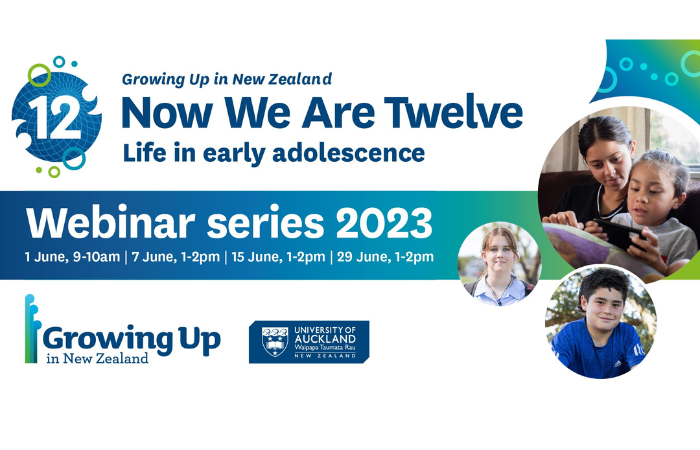New research released on nutrition of Kiwi infants

November 30, 2018
New University of Auckland research has examined whether Kiwi families are meeting national food and nutrition guidelines when feeding their babies.
MEDIA RELEASE
The research, from the university’s Centre for Longitudinal Research at the School of Population Health, looked at data from more than 6,500 of the children participating in the Growing Up in New Zealand study.
Dr Sarah Gerritsen, one of the report’s authors, says the research used 13 ‘infant feeding indicators’ to see how closely the Ministry of Health guidelines were followed.
“We were interested in factors such as whether the children were breastfed and for how long, whether solid foods were introduced at around six months old and if fruit and vegetables were eaten twice or more daily by the age of nine months.
“We know that nutrition in those first 12 months can affect a baby’s cognitive, social and physical development,” Dr Gerritsen says. “So it’s important to understand what’s happening and where families may need more support or information about how best to nourish their very young children.”
The project, designed in collaboration with the Ministry of Health, found that some of the guidelines had high adherence.
“By nine months old 80 percent or more of the children were eating an iron-rich food daily and were not having any extra sugar or salt added to their meals,” Dr Gerritsen says.
However, other guidelines were less closely followed with more than 60 percent of infants not eating fruit and vegetables twice or more daily at nine months.
“It’s concerning that more than half had also tried foods high in sugar, salt and fat such as lollies, chips and chocolate, and more than 40 percent had tried sugary drinks, including cordial and juice.
“These foods can add excess energy to infants’ diets while adding little nutritional value. But more than that, they can establish future taste preferences that make it difficult for children to choose healthy options later on.”
Dr Gerritsen says the research findings show the need to continue promoting the importance of breastfeeding, introducing solids when baby is ready (around six months) and making a variety of fruits and vegetables available to children.
She says water and breast milk or suitable formula are the recommended drinks for children younger than one. Sugary beverages such as juice or fizzy drinks shouldn’t be offered at this age.
The research findings, shared this week at the Nutrition Society of New Zealand conference in Auckland, will be considered during the Ministry of Health’s 2019 planned review of the Food and Nutrition Guidelines for Healthy Infants and Toddlers (Aged 0-2 years).
The research was funded by the Ministry of Social Development’s Children and Families Research Fund. Funded projects use data from the Growing Up in New Zealand longitudinal study to conduct research that informs government policy development.
ENDS
BACKGROUND INFORMATION
About the Food and Nutrition Guidelines for Healthy Infants and Toddlers (Aged 0-2 years)
The New Zealand Ministry of Health’s Food and Nutrition Guidelines for Healthy Infants and Toddlers (Aged 0–2 years) were published in 2008 and are based on evidence which reflects the types of food and nutrition that supports health and development for this age group. You can read them here.
QUESTIONS AND ANSWERS
What was the purpose of the research?
The research set out to understand:
- What proportion of infants are fed according to the Infant Feeding Guidelines?
- Whether adherence to the Infant Feeding Guidelines correlates with different socio-demographic characteristics?
How was the Infant Feeding Report research carried out?
The researchers looked at data gathered by Growing Up in New Zealand about children at different ages (in pregnancy, six weeks, nine months and 31 months).
Thirteen indicators of infant feeding were described, and then combined into an Infant Feeding Index (IFI) which summarised adherence to the infant feeding guidelines over the first year of life. This gave each child a score out of 100, with 100 meaning all of the guidelines were followed.
- The average score for infants on the IFI was 70 points
- The scores ranged from 13.5 to 100 points.
- A small number of infants (90 or 1.5%) received a top score of 100 on the IFI.
What were the key findings of the research?
The research found that infants in the Growing Up in New Zealand study had high adherence (80 per cent or more) to five of the 13 infant feeding indicators, as follows:
Infant Feeding Guidelines with high adherence (80% or more)
- Eating 3 or more solid meals a day at 9 months of age = 94% adherence
- Only breastmilk and/or suitable formula milk given by the age of 9 months = 94% adherence
- No sugar added to baby’s meals or milk at 9 months of age = 86% adherence
- No salt added to baby’s meals or milk at 9 months of age = 84% adherence
- Eating iron-rich food at least once daily at 9 months of age = 80% adherence.
Infant Feeding Guidelines with moderate adherence
- Inappropriate drinks never tried at age of 9 months (coffee, cordials, juice, tea or soft drinks) = 61% adherence
- Solid foods introduced around 6 months of age = 57% adherence
- Eating across the four food groups daily at 9 months = 53% adherence.
Infant Feeding Guidelines with low adherence (less than 50%)
- High salt/sugar/fat foods never tried at age of 9 months (sweets, chocolate, hot chips or potato crisps) = 47% adherence
- Eating fruit twice or more daily at 9 months = 37% adherence
- Breastfeeding duration to 12 months or beyond = 37% adherence
- Exclusive breastfeeding duration to around 6 months = 35% adherence
- Eating vegetables twice or more daily at 9 months = 33% adherence.
%201.svg)
.jpg)


